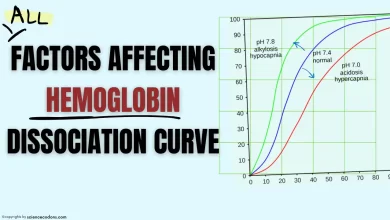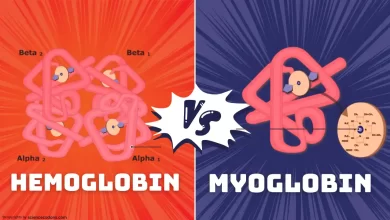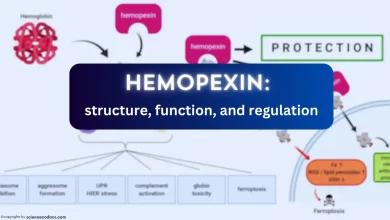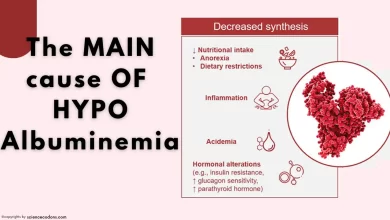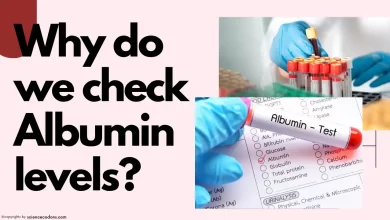If the level of bilirubin in the blood exceeds 1mg/dL, it leads to Hyperbilirubinemia. When the bilirubin level reaches 2-2.5mg/dL, bilirubin penetrates the body tissues, causing jaundice (yellowing of the skin and eyes).
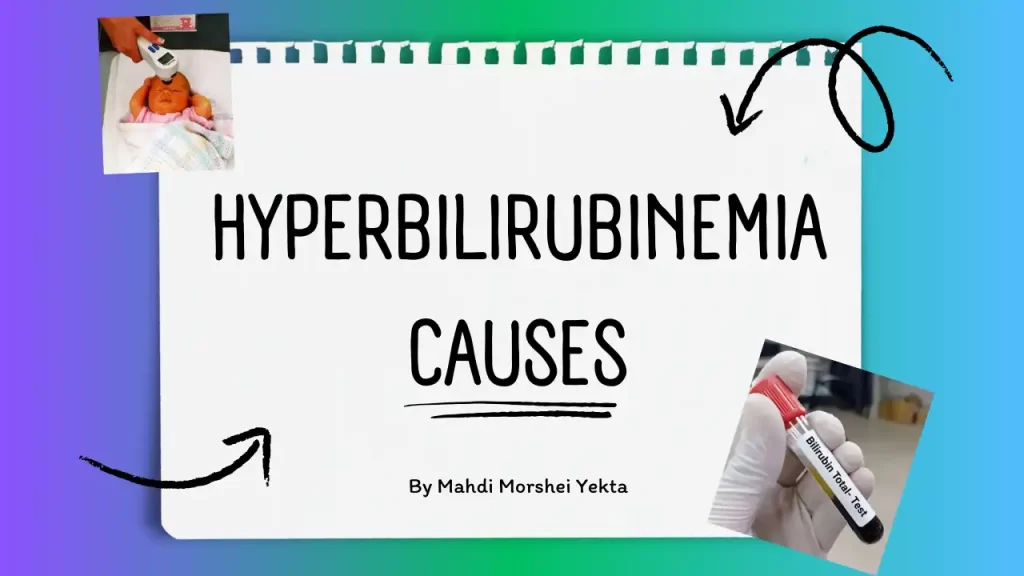
Hyperbilirubinemia types
For clinical purposes, we can classify Hyperbilirubinemia into two major categories based on the predominant type of bile pigments in the plasma. Hyperbilirubinemia is divided into unconjugated (indirect) and conjugated (direct).
1- Unconjugated Hyperbilirubinemia
In this type, unconjugated bilirubin (bound to albumin) increases in the blood. Due to its water solubility, unconjugated bilirubin can be excreted through urine.
– Unconjugated Hyperbilirubinemia causes:
Physiological Jaundice in Newborns
In newborns, a few days after birth, the level of unconjugated bilirubin rises due to an increase in the breakdown of red blood cells. If the blood bilirubin level exceeds mg/dL 25, it leads to kernicterus and cognitive impairment. Phototherapy is beneficial for these infants. Exposing them to light causes bilirubin to convert into derivatives such as bilirubin monoglucuronide, which can be excreted through bile, increasing bilirubin excretion.
Crigler-Najjar Syndrome
The cause of this syndrome is a deficiency in the activity of the enzyme glucuronyl transferase. There are two types of this syndrome:
- Type I: Autosomal recessive inheritance, resulting from complete deficiency of UDP-glucuronyl transferase. Individuals with Type 1 usually die within 15 months after birth.
- Type II: Mild deficiency of UDP-glucuronyl transferase. In this type, blood bilirubin levels rarely exceed 20 mg/dL. The predominant bilirubin in these patients is bilirubin monoglucuronide, suggesting a likely mutation in the enzyme responsible for the second glucuronidation step.
Gilbert Syndrome
Gilbert syndrome is a benign and harmless condition inherited in an autosomal recessive manner. It occurs due to a mutation in the enzyme glucuronyl transferase. In Gilbert syndrome, the enzyme’s activity is not entirely lost; instead, it decreases by up to 30% of the normal amount. As a result, unconjugated bilirubin levels increase. The only clinical sign of Gilbert syndrome is occasional yellowing of the skin or the white part of the eyes (sclera). No specific treatment is required for this condition.
Lucy-Driscol Syndrome
Lucy-Driscol syndrome is a genetic disorder with autosomal recessive inheritance caused by a mutation in the enzyme glucuronyl transferase. This condition does not require specific treatment and may only manifest transient Hyperbilirubinemia due to increased unconjugated bilirubin. Although it is a genetic disorder, sometimes the onset of the disease is related to steroids transmitted through breast milk.
2- Conjugated Hyperbilirubinemia
Involves elevated levels of conjugated bilirubin. Conjugated bilirubin (direct bilirubin) rises in the blood. Conjugated bilirubin can pass through the blood-brain barrier and enter brain cells. Its entry into brain cells disrupts their function, leading to kernicterus and cognitive impairment.
– Conjugated Hyperbilirubinemia causes:
Dubin-Johnson Syndrome:
Dubin-Johnson syndrome is an autosomal recessive inherited disease in which liver cells cannot secrete conjugated bilirubin into bile. This condition occurs due to a mutation in the MRP2 protein necessary for bilirubin excretion into bile. Clinically, specific symptoms are rarely observed in this syndrome. In Dubin-Johnson syndrome, the level of conjugated bilirubin in the blood increases.
Rotor Syndrome
Rotor syndrome is a genetic disorder with autosomal recessive inheritance that shares many similarities with Dubin-Johnson syndrome, except that liver pigmentation is absent in this condition. Rotor syndrome results from mutations in transport proteins such as OATPBI (B1) and OATPB3 (B3). Consequently, impaired transport of anions, including bilirubin, into bile is observed in this disorder. Similar to Dubin-Johnson syndrome, the level of conjugated bilirubin increases in Rotor syndrome.
Summary:
| Type of Hyperbilirubinemia | Causes |
|---|---|
| Unconjugated Hyperbilirubinemia | Overproduction of bilirubin Impaired bilirubin uptake by the liver Abnormalities in bilirubin conjugation |
| Conjugated Hyperbilirubinemia | Biliary obstruction Hepatic inflammation |
Reference:
Hyperbilirubinemia and Jaundice | Children’s Hospital of Philadelphia (chop.edu)

